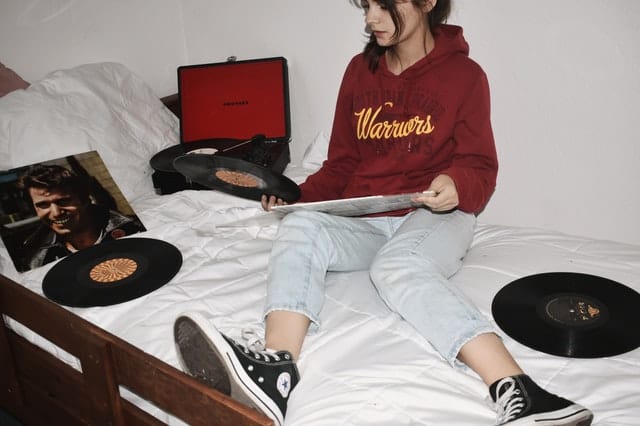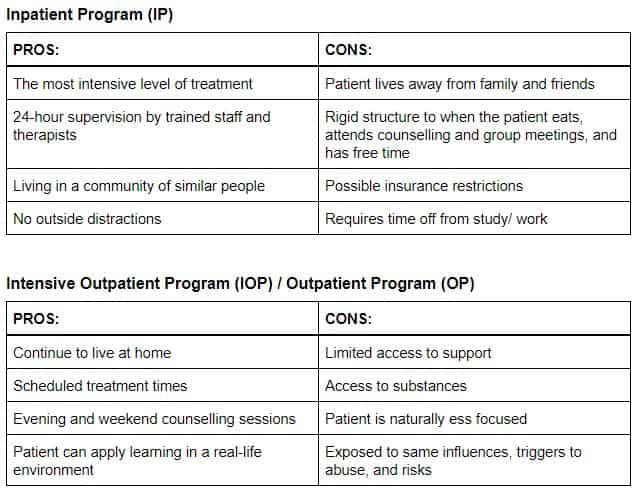For the parent or guardian of an addicted child, ensuring you get them into the best drug and alcohol teenage rehabilitation center for them and their needs can be a stressful and fearful process, especially, in the beginning. If you live in the state of Idaho, you may even be thinking you’ll need to place them in the care of a rehab center out of state. However… Relax. Everything you need to ensure the most professional and most apt rehab treatment for your addicted teenage son or daughter is right here – in the “Gem State” (you just may need to take some time weeding out the paste from the real thing). For a teenager growing up in Idaho, if they haven’t already meddled with alcohol or drugs themselves, for sure, they know another teenager in their class who has. Did you know that the latest statistics from the Centers for Disease Control and Prevention (CDC) and the National Institute on Drug Abuse (NIDA) both show that nearly 20% of U.S. high school students have been offered, sold or given drugs, right there on school property, in the past year? On the plus side, though, that same set of stats paints a slightly rosier picture for the future – drug use among teenagers is actually declining year-on-year.
“All the suffering, stress, and addiction comes from not realizing…You already are what you are looking for.” – Jon Kabat-Zinn, U.S. professor emeritus of medicine

Common Substances of Abuse for Teenagers: A Comparison of Idaho with U.S. National Averages
Let’s now look at certain substances, in particular – alcohol, marijuana, prescription drugs (such as opioid painkillers, and stimulants, such as ADHD medication) – sadly, the usual ones for curious and, potentially, risk-taking teenagers… These drugs, along with alcohol, are the most likely to be abused by teenagers, and, therefore, to lead to that adolescent suffering from either Substance Use Disorder (SUD) or Alcohol Use Disorder (AUD). Both disorders, also termed as addiction, are described in medical terms as “chronic, relapsing brain disorders” – they are classed as chronic medical diseases, just like Type I diabetes, hypertension or asthma. In fact, all have similar rates of relapse.
Alcohol: Still the Old Favorite
It will probably come as no surprise whatsoever that U.S. high school students abuse alcohol far more* than any illicit drug. What may not be so obvious is that it is, by far, the most harmful and damaging. Underage drinking is responsible for around 119,000 ER visits and approximately 4,300 deaths every single year – without fail – for those under the age of 21. Here are a few more worrying government statistics concerning high school students:
- 58.5% of 12th graders had tried alcohol at some point
- 30% of high schoolers have drunk in the last month
- 16% rode in the car of someone who had been drinking
- 13% regularly binge drank* (consuming four or more alcoholic beverages in a row)
- 6% drove after drinking
In Idaho, the statistics related to underage alcohol consumption are similar to the national average: however, with a slightly higher usage among females. *Important: If there is one pattern of drinking behavior most likely to lead to an alcohol use disorder, it is regular underage binge drinking. Additionally, depending on the seriousness of the alcohol abuse, your teen may require a medical detox.
Marijuana: Still a Gateway to Worse
Often seen as harmless (as it is legal in some U.S. states), marijuana is a common “gateway drug” – that is, it is common for marijuana users to move on to harder drugs, such as cocaine, seeking a more powerful high. However, it certainly is not legal in the state of Idaho, which has easily some of the harshest marijuana laws in the U.S. – for example, selling marijuana can lead to 10 years jail-time, and $30,000 in fines, depending on circumstances. U.S. high school marijuana use clearly affects average educational achievement, with only 10% of regular users achieving A grades, and 48% getting those lowly D and F grades… Maybe not so “harmless,” then. In comparison, in Idaho, marijuana use for Grades 9-12 is noticeably lower than the national average – undoubtedly, down to stricter punishments across the state for its personal use and supply.
Prescription Drugs: The New (and Old) Threats
The opioid epidemic has, fortunately, had less of an impact in the school system than other, older demographics. In fact, the non-medical use of prescription drugs, especially opiate painkillers, has actually decreased further in recent years. Around 11% of high school students report misusing prescription medications in the past year. However, if you look specifically at painkillers, that number drops to only 4%. However, prescription stimulants, used for the treatment of attention-deficit hyperactivity disorder (ADHD), such as the amphetamine Adderall and the methylphenidate Ritalin, are often misused by students who need to stay awake and study. However, these drugs are addictive and have dangerous effects on adolescent health if abused. The non-medical use of amphetamines and other stimulants by teenagers across the U.S. is currently increasing:
- 6.9% of high school seniors report misusing Adderall
- 7.9 to 9.8% of students misuse any type of amphetamine, and
- ER visits for ADHD medication misuse actually tripled between 2005 and 2010
In Idaho, the statistics for opioid and stimulant misuse mirror the rest of the country. Other common drugs used by teenagers include:
- Cough medicines
- Hallucinogens, such as LSD and salvia (a potent Central and South American plant used for its psychoactive effect)
- Ecstasy (MDMA)
- Cocaine
- Inhalants

How to Tell If Your Teenage Child Needs Drug & Alcohol Rehabilitation?
If you are reading this article because you are concerned your teenage son or daughter needs addiction treatment for substance abuse, there are certain physical, mental, behavior and appearance signs that all those misusing drugs or alcohol will have difficulty hiding. In fact, if your teenager is attempting to hide, or pass off, these various signs of substance abuse, this is a clear sign in itself.
Physical Signs of Teenage Substance Abuse
These are undoubtedly the clearest and most identifiable signs you will notice if your teenager is abusing drugs or alcohol, as behavior and other indicators are more easily explainable, with “Oh, I’m just having a bad day…” or something similar. Physical changes are definitely the hardest to hide. According to the National Council on Alcoholism and Drug Dependence (NCADD), physical signs of substance abuse can include:
- Bloodshot eyes and/or dilated pupils
- Extreme weight gain or loss
- Tremors / shaking
- Sleep problems
- Deterioration in physical appearance and personal grooming, eg. bad breath or body odor
- Impaired coordination
- Incoherent speech
- Seizures
It is important to remember that signs of substance abuse and addiction can vary depending on the type of substance being abused. As the National Institute on Drug Abuse (NIDA) advises, “Parents who are unsure whether their child is abusing drugs can enlist the help of a primary care physician or drug abuse treatment provider (ie. professional teenage rehab center).”
Emotional Signs of Teenage Substance Abuse
Although teenagers can, at times, be their own whirlpool of emotions, as they go through a number of natural physical changes, substance abuse will invoke a number of recognizable psychological signs. These can include:
- Personality and attitude changes
- Sudden and extreme mood swings
- Hyperactivity
- Agitation
- Lack of motivation
- Lethargy
- Cognitive problems
- Being withdrawn
- Anxiety
- Paranoia
- Lying and dishonesty
Social Signs of Teenage Substance Abuse
With both the physical and emotional signs mentioned above, social signs of substance abuse will follow and develop as a matter of course. These social signs can include:
- Family arguments
- Truancy / Getting into trouble at school
- Lower grades
- Loss of interest in social activities, including hobbies or sports
- Decreased motivation in going out
- Sudden changes in friends and relationships
- Secrecy and other suspicious behavior
- Asking for money or stealing
- Drug or alcohol paraphernalia

Top 8 Tips For Choosing the Right Rehab for Your Teenage Child
If you have sought confirmation of your teenager abusing substances from either your family physician or a professional addiction specialist, you will now have to consider their attendance at a teenage addiction rehabilitation center. In fact, you may have already been advised by either of these medical professionals that residential addiction treatment for your teenager definitely has to be your next course of action.
1. Due Diligence
If ever there was a time you needed to apply your absolute maximum level of due diligence, choosing your teenager’s alcohol and drug rehab has got to be it. There is a plethora of information now online about addiction treatment rehab centers, and you need to cut directly through any overinflated claims about success rates, latest therapies, and the rest (and it’s there, for sure), and select a rehab center that will give your teenage child the best possible chance for the recovery from the damage done by substance abuse. You may well have been advised about the most appropriate teen rehab center by either your family physician or an addiction specialist. The same rule applies here – check these out as comprehensively as you can. If you are looking for a state-licensed teenage rehab center in Idaho, you can go to the SAMHSA’s Find Treatment page, where you can simply enter your zip code for addiction services local to you.
2. Inpatient or Outpatient Treatment
Undoubtedly, this is the most important choice to be made for the vast majority of parents of teenagers with either SUD or AUD. Do I send my son or daughter away to a facility where they will live temporarily, be treated, learn about their disorder, and the tools they need to control it? Or would a teenage outpatient rehab program be just as successful, allowing my child to continue to live at home as normal? Obviously, as this is a choice with no clear and definitive answer, it is going to depend on many unique factors – unique to both you and your teenager’s situations. However, both have clear pros and cons in general terms, which include: 
Our Adolescent Day Treatment Program (IOP)
At Ashwood Recovery, here in Nampa, Idaho, we offer an Adolescent Day Treatment Program, specifically designed for assisting 13-17-year-olds who are struggling with behavioral and mental health conditions. In a safe and therapeutic environment, your teenager can engage in extended outpatient treatment for mental health and substance use disorders (dual diagnosis). The day treatment program includes group participation, schooling, individual sessions, case management, psychiatric care, nursing care, and family therapy, and is provided by an interdisciplinary team of NCQA-credentialed providers, who use evidence-based treatment methods and criteria. All teenagers (aged 13-17) receive:
- A complete psychosocial assessment and mental health evaluation with a family member or guardian present
- Twice-weekly meetings with the facility psychiatrist to evaluate and reconcile medications, monitor psychiatric needs and assist in the stabilization process
- Individual, group and family-focused therapy sessions
- Onsite nursing care and oversight
- Crisis intervention available for increased psychiatric symptoms, suicidal/homicidal ideation, and limited community resources
Our adolescent day treatment requires a minimum of 30 hours per week (5 days per week, 6 hours per day), and its duration is based entirely on individual needs, with your child being assisted with discharge/transition planning to integrate back into the community, schooling system and ongoing care. One last fact that needs to be provided is with reference to successful outcomes of each option. Again, there is no definitive answer, but most addiction experts lean towards the inpatient option, agreeing that the more intensive and longer the treatment, the higher the chance that the patient will achieve a successful recovery.
3. Professional Accreditation
The exact quality of care that your teenager receives in a rehab center may be difficult for you to ascertain fully prior to their treatment. However, as with any professional medical facility, there are professional accreditations (the indication of an assured standard of care) that can be awarded to those centers which are worthy. The following accreditations are the most sought after:
- JCAHO Joint Commission on Accreditation of Healthcare Organizations
- CARF Commission on Accreditation of Rehabilitation Facilities)
- NAATP National Association of Addiction Treatment Providers)
4. Specialisms / Dual Diagnosis
Many rehabilitation centers advertise particular specialisms, such as the treatment of dual diagnosis patients (where the patient also has a concurrent mental disorder), or that they cater specifically for men, women, those requiring trauma care, adolescents or LGBT patients. This is easily one of the areas where your maximum due diligence comes to the fore to ensure those that focus on teenage substance abusers have excellent adolescent treatment programs, results, and reputations.
5. Therapies & Modalities
With the advancements in addiction treatment during the last 20 years or so, there are now a number of specialized addiction therapies (also referred to as modalities) available to teenage patients, in tandem with the more standard treatment model of individual counseling, group and family support, and learning the tools to continue recovery. Specialized therapies can include, among others:
- CBT (Cognitive Behavioral Therapy)
- DBT (Didactic Behavioral Therapy)
- Grief and Loss, Trauma Therapy
- Crisis Intervention
- Co-Occurring Intervention
- Family Therapy
- Relationship Counseling
- Psychotherapy
- Interpersonal Therapy
- Mindfulness and Meditation
- Art, Music and Pet Therapy
6. Options & Additional Services
One of the most obvious options available to you is the actual location of where your teenager receives their addiction treatment, either locally, in the same state, or out of state. However, opinions vary between addiction treatment experts on whether close or distant is the most suitable preference. That said, as your teen is just that – a teen – then knowing you are close by may put them more at ease. Other options and additional services, which are far more likely in more expensive accommodation, can include:
- Luxury accommodation
- Extensive fitness facilities, eg. swimming pool
- Spa-type options, eg. sauna, massage, etc.
7. Insurance Verification
Cost, as with any service, can be restrictive. However, you’ll be pleased to know that many family health insurance policies cover substance abuse treatment (specifically, SUDs and mental disorders) as a matter of course. However, it is always advisable to check with the rehab facility to ensure they accept your family health insurance as payment for your teenager’s treatment costs. Most will offer insurance verification on their website, as we at Ashwood Recovery gladly do.
8. Outcomes: Data & Analysis
Many addiction rehab facilities will claim to have superior success rates to others (most notably, better than the other facilities in their general location). Always ask for verification of outcome success rates whichever rehab facility you decide upon for your teenager. Additionally, addiction treatment programs that have these essential elements have been proven to be more successful:
- Group therapy, allowing peer-to-peer discussion
- One-on-one therapy with a qualified counselor or therapist
- Individualized treatment plans based on patient needs and treatment goals
- Following up with a quality outpatient or intensive outpatient treatment plan for clients who complete inpatient rehab for continued professional support
Lastly, it is important to remember that SUD, a chronic and relapsing medical disorder, is in the same bracket as other chronic, relapsing disorders, such as hypertension, asthma, and Type I diabetes. Here are the relapse rates for the three:
- Relapse rate for Type 1 Diabetes is between 30-50%
- Relapse rate for drug addiction is between 40-60%
- Relapse rate for hypertension or asthma is between 50-70%

FAQs: Frequently Asked Questions When Choosing Your Teen’s Rehab Center
You are a parent or guardian of a teenager with SUD – naturally, you will have a multitude of questions (and, in the same breath, you’ll be hoping you are asking the right ones too). It’s a good idea to make a list of appropriate questions before you make a visit to any possible rehab centers for your teenager. That way, you won’t forget any. To assist you, an in-depth study of adolescent substance abuse programs was carried out in the U.S. between 2001 and 2003 by Washington and NewYork clinical addiction specialists to determine what elements of treatment were intrinsic to recovery – we shall base our questions on their now proven findings. Rather like a recap of all the information given above with extras, here are the best frequently asked questions when choosing your teen’s rehab center:
- Do you customize the treatment plan specifically for my teen?
- Does your program have a comprehensive and integrated approach, which will address all aspects of my teen’s life so far?
- What therapies and modalities does the rehab center offer teenagers?
- Do you offer specific treatment for dual diagnosis (co-occurring disorder)?
- Are you professionally accredited with a medical and/or addiction specialist organization?
- As a parent, am I involved in my teen’s treatment? Is family support part of your program?
- Is the treatment specifically tailored to teenagers, not all ages?
- Will my teen be actively engaged in their own treatment?
- Are all your therapists, doctors and other staff members trained in substance abuse and mental health therapy for teenagers?
- Does the program take into consideration my teen’s gender and cultural background?
- Do you create an after-care program for my teen when their treatment here is concluded, allowing them to safely reintegrate into society, and to prevent relapse?
- Do you keep track of your patients’ recoveries and relapses to ensure that your methods are effective?
- How can I check that my insurance plan is valid at your teen rehab center?

